Creating a study group
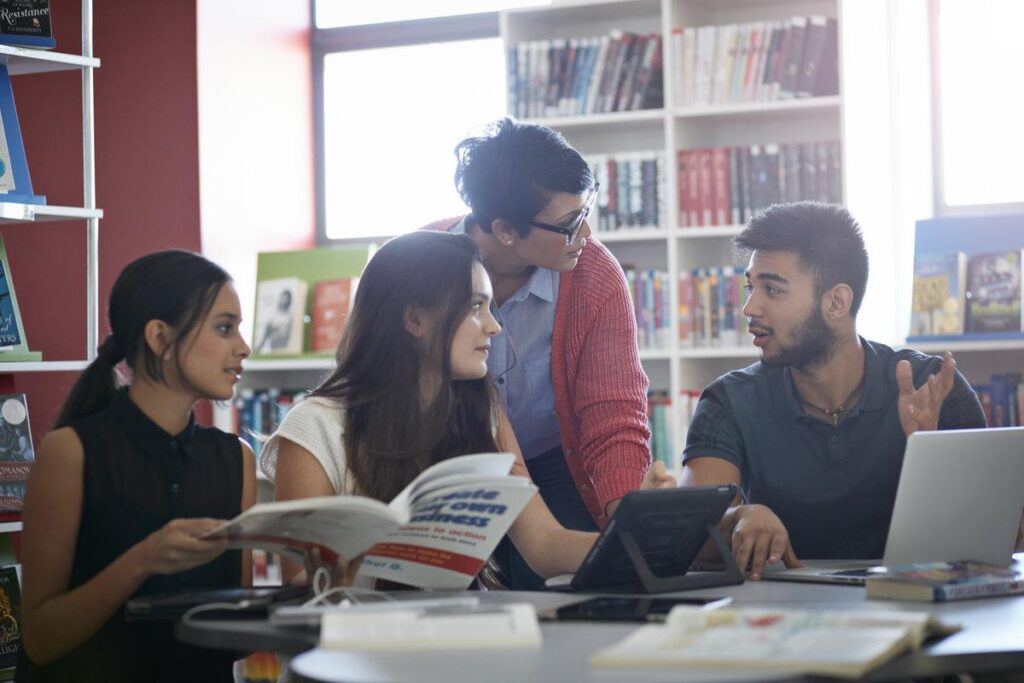
Listen to the conversation about creating a study group to practise and improve your listening skills.
Do the preparation task first. Then listen to the audio and do the exercises.
Preparation
See MoreTranscript
See MoreAli: Hey, you guys, I’ve been looking for you. I’ve got an idea – a study group. What do you think? Are you interested?
Dina: Yes! I need a study group, in a big way.
Bea: Me too.
Ali: Do you think we have enough people here for a study group? I mean, there are only four of us …
Bea: Sorry. Three of us. Chris can’t do study group. Right, Chris?
Chris: Yeah, there’s no way I can do a study group. I have an assignment and then I’m too busy. But I’ll stay for this first meeting.
Ali: Should we try and get another group together with us for this?
Bea: No, I don’t think so. I think three is fine. Ideal size, really.
Dina: Me too.
Ali: OK, three people then. Four people for the first meeting. What next?
Bea: What about a meeting place? We can’t meet here in the library …
Ali: It’s not too bad, especially if those other people would go away.
Bea: But we can’t exactly ask them to leave, and people might get annoyed with us talking.
Dina: Can I say something here?
Ali: Sure, go ahead.
Dina: There’s a study hall next to the cafeteria. It’s almost always empty. Could we meet there?
Ali: A study hall?! Who knew? Well, it sounds good to me.
Bea: Yeah. I’ve never been there but …
Ali: So, we ought to decide how long for and how often.
Dina: I read somewhere that you should make the meeting at the same time each week. Like a seminar. That way we’d take it more seriously.
Bea: We may as well make it for this time since we’re all here. Is this time OK?
Dina: Works for me.
Ali: Me too.
Chris: Hang on just a minute. I know I’m not going to be in this group, but aren’t we supposed to have a seminar at this time every other week?
Dina: Umm, no.
Bea: Thursday, no?
Ali: No, that’s on Thursday.
Chris: Sorry. Forget I said anything.
Ali: Don’t worry about it.
Bea: So everyone agrees that this time is fine? Every week?
Ali: How long should we make it?
Bea: An hour?
Dina: Could we find a way of making it two hours?
Ali: Two hours seems a bit like … too much. To start with then?
Bea: Ninety minutes? Compromise?
Ali: Is that OK with you, Dina?
Dina: Fine by me.
Ali: OK, so I guess all we have left to decide is exactly what we’ll do when we meet. The final exam is a way off. I guess we could review our notes, or practise learning things by heart.
Dina: I have a list of dos and don’ts actually that I got online. I could be a moderator, and we could use the ideas as a starting point …
Task 1
See MoreListening B2: Creating a study group – 1
Task 2
See MoreListening B2: Creating a study group – 2
Business news

Listen to the business news to practise and improve your listening skills.
Do the preparation task first. Then listen to the audio and do the exercises.
Preparation
See moreTranscript
See moreThe first item in the news today is the recent elections that took place across the country. This was a crucial vote, which may see a dramatic change in how the country develops over the coming years. Overall, a 54.5 per cent voter turnout was registered. This represents an increase of 11 per cent over the previous election and six per cent above the average for the past 50 years. There has also been a slight change in demographics, with an increase in youth turnout in the 18- to 24- and 24- to 29-year-old brackets. Despite this increase, young people are still less likely to vote than older people; 84 per cent of voters in the 70 plus age group came to the polling stations.
Moving on, the global digital powerhouse ONK today posted quarterly results which were above forecast. Back in March, Tim Bolling, CEO, issued a profit warning over fears that there would be losses following the recall of their leading product, the 40d device. In fact, the company posted quarterly revenue of US$14.8 billion which represents an increase of 11 per cent from the same quarter a year ago. They also announced that they had sold 21 million 40d devices over the quarter. The company has provided the information that with this level of revenue, there will be a gross margin of 34 to 35 per cent, ultimately leading to a US$1.20 per share cash dividend awarded to shareholders.
And in our final news item we ask, will we soon be saying goodbye to coins and notes forever? The nationwide trend of using cashless payment options is increasing. There are a number of reasons for this development. A key reason for this is a growing interest in reducing the number of items people need to leave their homes with. As almost everyone carries a smartphone with them, and many people also have smartwatches, the ability to pay for things using one of these two technologies is particularly appealing. More and more retailers are accepting cashless payments and in some cases they’ve stopped accepting cash altogether.
Task 1
See moreChoose the correct option to complete the sentences.
Task 2
A talk about motivation

Listen to the talk about motivation to practise and improve your listening skills.
Do the preparation task first. Then listen to the audio and do the exercises.
Preparation
See More
Transcript
See MoreSo, we think we know how to motivate people, right? Offer them a reward. Do this and you’ll get this. Do this faster, earn more money. Do this better than everyone else, here’s a promotion. We offer incentives when we want people to do things. We do it at work, at school, even at home with our kids. Tidy your room and you can watch TV.
But when social psychologists test whether incentives work, they get surprising results. Sam Glucksberg, from Princeton University, America, set people a problem to solve and told them he was going to time them to see how long they took. Then he put them in two groups. He offered one group a reward for finishing fast. Five dollars for anyone finishing in the top 25 per cent and 20 dollars for the person who finished the fastest of all. To the other group he offered no incentive, but he told them he was going to use their times to calculate an average time.
The first group, the ones with the reward, solved the problem faster, you’d think, right? Well, no, they actually took three and a half minutes longer than the group who just thought they were being timed. Incentive didn’t work. In fact, it made them slower. This experiment has been repeated, with the same results, many times. But in business we still offer bonuses, promotions and rewards to staff.
That’s fine if we want them to do something simple, like chop wood. We’ll pay you more if you chop the wood faster. An incentive works then. But if we want someone to do something complex, something creative, something where they have to think, rewards don’t work. They might even have the opposite result, and make people perform worse. Another study, by Dan Ariely, showed that the bigger the reward, the worse the subjects performed on a complex task. The reward made them focus so hard on the result that they couldn’t think creatively any more.
And this all matters because more and more simple jobs will become automated. We’ll be left with creative, problem-solving jobs that computers will never do. And we need to find a way to motivate people to do those jobs when we’ve proved the traditional incentives don’t work.
So what does work? Giving your workers freedom; freedom to work on the things they want to work on, freedom to choose when, where and how they work. Want to work from home three days a week, get up late and work into the night instead? Fine. Just do the job well. And evidence shows people who choose the way they work get results. Companies that give employees time during the week to work on things that interest them and are not part of their regular job achieve amazing things. Some of the big tech companies are good examples of this, with ping-pong tables and areas to relax in …
Task 1
See More
Task 2
See More
An introduction to a lecture
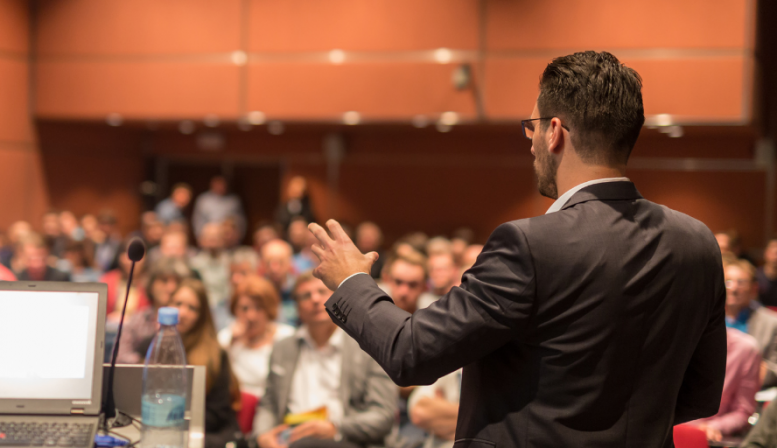
Do the preparation task first. Then listen to the audio and do the exercises.
Listen to the introduction of a psychology lecture to practise and improve your listening skills.
Preparation
See More
Transcripts
See MoreGood afternoon, everyone. Welcome to the first lecture of our new course in Positive Psychology. While some people may associate psychology with looking at what’s wrong with us, and at what problems we have, there is much more to psychology than that. Positive psychology, for example, looks at how to help people become happier.
This lecture begins with a question: what makes a happy life?
Now, I’m going to give you one possible answer. A happy life is a life in which you are completely absorbed in what you do. Now, how does this compare with what you and your partner said?
This answer comes from the work of Mihaly Csikszentmihalyi and the theory of flow. Csikszentmihalyi is a psychologist who has spent much of his professional life on the study of what makes people happy and how we can find happiness.
Csikszentmihalyi suggests the theory that happiness is not caused by external events or things that happen to us. Our perception of these things and how we see these events either makes us happy or sad. In other words, if we want happiness, we have to actively look for it. However, this does not mean that we should always look for happiness! Csikszentmihalyi believed that our happiest moments happen when we are in a state of flow.
The theory of flow can be summarised like this: when we are totally involved in, or focused on, what we are doing, we are in a state of flow.
Csikszentmihalyi got the inspiration for this theory when he noticed how artists worked in a studio. They completely lost track of time, they didn’t notice they were hungry or tired, and they could work for hours, even days, without stopping. Anyone I have spoken to who has experienced this state of concentration has said it’s difficult to explain. The best way to explain it is that it is like being in a river and the flow of the water carries you away.
For the rest of this lecture, I will explore this theory of flow in more detail. First we will look at Csikszentmihalyi’s life, and how it influenced his ideas. Then we will look at the conditions that go with a state of flow. What creates flow, exactly? Finally, we will look at activities that can help us achieve flow in our everyday lives. Will this course make you happy for life? Well, maybe. Maybe.
Right, let’s get started. If you look at the next slide …
Task 1
See More
Task 2
See More
Facts and figures
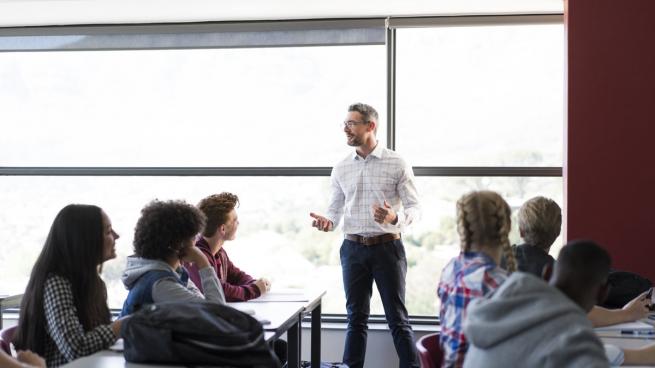
Listen to the lecturer giving some facts and figures to practise and improve your listening skills.
Do the preparation task first. Then listen to the audio and do the exercises.
Preparation
See More
Transcript
See More… and the next part of this talk is on the Panama Canal. It’s amazing how this one small section of a small country can be so important to the world. Let’s learn a little bit about the canal itself, before we look at how it connects to everything else.
The Panama Canal is an artificial waterway in the Central American country of Panama that connects the Atlantic and Pacific Ocean. It is only 82 kilometres long. If you go around South America by ship then you need to travel another 15,000 kilometres. So the canal saves a lot of travel time. It takes around 8 to 10 hours to cross the canal.
The French started building the canal in 1881, but they couldn’t finish it. The project was started again in 1904 by the United States and the canal was finally finished in 1914. Many people died while they were building the canal, some say up to 25,000. For the rest of the 20th century, the United States controlled the canal, but gave control back to Panama in 2000.
Every year, around 40,000 ships come through the canal. These are mostly commercial ships. They transport goods for trade between Asia and America, or Europe. In 2016 the government of Panama made the canal bigger, so that now 99 per cent of ships can pass through it.
Let’s now turn to the role of the Panama Canal in the global economy …
Task 1
See More
Task 2
See More
Changing plans
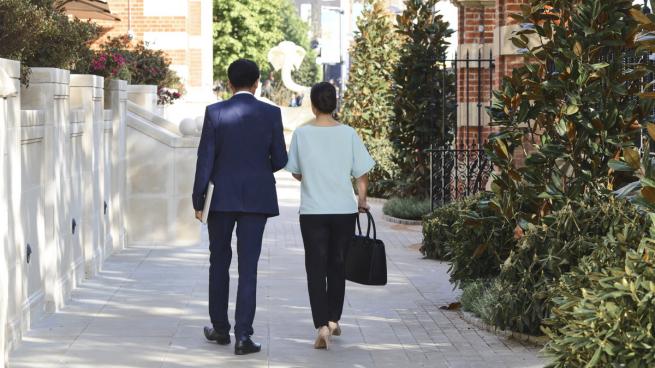
Listen to two people talking about changing their plans to practise and improve your listening skills.
Do the preparation task first. Then listen to the audio and do the exercises.
Preparation
See More
Transcript
See MoreFrancesco: Sachi? Sachi? Sachiko!
Sachi: Francesco! Is everything OK?
Francesco: Yes. Yes. Sorry, I saw you and I was across the street … I ran.
Sachi: I see. What’s up?
Francesco: Do you have the tickets … for the play?
Sachi: No, I don’t. I’m going to buy them this afternoon.
Francesco: Oh good, good. Listen, don’t buy tickets for this Friday.
Sachi: Oh? Why not?
Francesco: I can’t go to the theatre on Friday. Something’s come up. I have a concert this Friday.
Sachi: Another concert? But you said …
Francesco: I know, I know. I’m sorry. I forgot.
Sachi: Francesco!
Francesco: How about next week? Are you free then? I can definitely go next Friday.
Sachi: Francesco. You did this two weeks ago, remember? I had cinema tickets for the new Marvel movie and you changed the plans then too. For band practice.
Francesco: I know, and I …
Sachi: We also missed my favourite dance group. Because your band was playing at some child’s birthday party.
Francesco: It was my nephew’s birthday …
Sachi: Ha!
Francesco: OK, why don’t we go out for dinner before my concert? Then, next Friday we can go to the play.
Sachi: Oh …
Francesco: Come on, Sachi. Just this one more time.
Sachi: OK, but promise me next Friday. OK?
Francesco: I promise. I promise!
Task 1
See More
Task 2
See More
Changing a meeting time

Listen to two colleagues arranging a meeting to practise and improve your listening skills.
Do the preparation task first. Then listen to the audio and do the exercises.
Preparation
See More
Transcripts
See MoreLucy: Hi, Anna. Do you have a minute to talk about the meeting next Tuesday?
Anna: Sure. We said 11, didn’t we?
Lucy: Yeah, we did. But I have a bit of a problem with the time. Would it be possible to move it?
Anna: Oh, I see. We could postpone it to the afternoon, to 1 p.m., for example. Or bring it forward to earlier in the morning. What would suit you?
Lucy: Could we make it 9 o’clock? That would really help me. I have another important meeting in the central office at 12.
Anna: No problem. It’s important you’re there.
Lucy: Thanks a lot, Anna.
Anna: Do you need help with any preparation? Did you get the agenda I sent out?
Lucy: Yes, I did. And no, that’s all fine, thanks. My report is ready and I’m looking forward to presenting it.
Anna: Great.
Lucy: I can tell Sven about the time change. I’ll see him later.
Anna: Don’t worry about telling Sven. I’ll send an email to everyone to confirm the time has changed and with an updated meeting invite.
Lucy: Great. Thanks, Anna.
Anna: OK. I’m happy that works for you. We really need you there and it’s good we don’t have to cancel it.
Lucy: See you then. Have a good weekend in the meantime.
Anna: You too.
Task 1
See More
Task 2
See More
Finding the library

Listen to a conversation about the university library to practise and improve your listening skills.
Do the preparation task first. Then listen to the audio and do the exercises.
Preparation
See More
Transcript
See MoreStudent: Hi. Excuse me.
Student B: Yes?
Student: Where’s the library?
Student B: The library? It’s next to the registration office.
Student: Ah … sorry, I’m new. Where’s the registration office?
Student B: No problem. See the big building over there?
Student: Yes.
Student B: OK, so that’s the lecture theatre. Next to that, on the right, is the registration office. And next to that is the library.
Student: I see. Thanks!
Student: Hello?
Librarian: Hello.
Student: Is this the library?
Librarian: Yes, it is. Quiet, please.
Student: Oh, sorry. Thank you.
Librarian: Can I help you?
Student: Er, yes, please. I want to borrow some books. What do I need?
Librarian: You need a library card. Here’s the application form. You can take up to six books maximum today.
Student: OK. Six books.
Librarian: Yes. You have two weeks to read the books. Then you bring them back.
Student: And if I’m late?
Librarian: Every day you are late there is a fee of fifty pence.
Student: OK, 50p a day. Er, anything else?
Librarian: Mobile phones must be switched off in the library. You can bring your laptop, but please use headphones to watch videos or listen to music.
Student: OK, great.
Librarian: And you can’t bring food or drink.
Student: No food, no drink. And …?
Librarian: And please speak quietly! People are working here.
Student: Oh! Oh, OK. Thank you.
Librarian: You’re welcome.
Task 1
See More
Task 2
See More
Business cards

Listen to four people talk about their jobs to practise and improve your listening skills.
Do the preparation task first. Then listen to the audio and do the exercises.
Preparation
See More
Transcript
See MoreA
A: Hello, Doctor Miller. It’s nice to meet you.
B: Please call me Peter.
A: OK. Are you a medical doctor? It must be helpful when you sell medical equipment.
B: Actually, no. My doctorate was in electronic engineering, but it’s still helpful for me when I sell our equipment.
B
Good morning, everyone. I’m happy to be here today to tell you about our new project. My name is Alessandro Rossi. I’m the project leader on the Starlight programming project.
C
Pleased to meet you. Here’s my card. My real name is Megumi Tanaka, but people who are not from my country think it’s difficult to say my name, so I use another name, Meg, when I’m working internationally.
D
Hello, everyone. My name’s Andres Mulligan. I’m very happy to be joining this team for the next few months and learning more about research and development.
Reading text
See More1.
| DX Medical Equipment Ltd | Dr Peter Miller Sales Director |
2.
*Space10 Designs* | Alessandro Rossi Lead Programmer |
3.
| Global Engineering Consults | Megumi Tanaka Product Manager |
4.
| MaXtin Ltd | Andres Mulligan Jr Intern, R&D team |
Task 1
See More
Task 2
See More
A lecture about an experiment
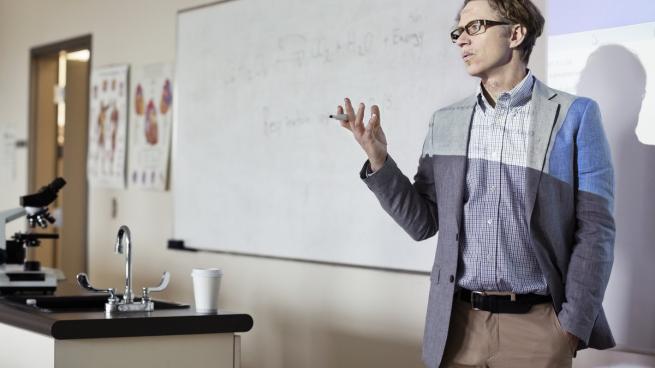
Listen to the lecture about a science experiment to practise and improve your listening skills.
Do the preparation task first. Then listen to the audio and do the exercises.
Preparation
See More
Transcript
See MoreIn today’s lecture we’re going to be talking about experiments, and I thought it might be interesting for you all to learn about the world’s oldest continuously running laboratory experiment that is still going today. In fact, it holds the Guinness World Record for being the longest-running experiment. This experiment began in 1927 and has been going ever since.
It’s called the ‘pitch drop’ experiment and it was created by Professor Thomas Parnell at the University of Queensland, Australia. Parnell was the university’s first physics professor, and he wanted to show in this experiment that everyday materials, such as pitch, can have quite surprising properties.
You see, when pitch is at room temperature, it feels solid. You can easily break it with a hammer. However, it isn’t in fact solid. At room temperature, pitch is many billions of times more viscous than water, but it’s actually fluid.
In 1927, Professor Parnell took a sample of pitch. He heated it and poured it into a glass funnel. He allowed the pitch to cool and settle – for three years. He then turned the funnel upside down and cut the top off it.
Since then, the pitch has slowly dropped out of the funnel. How slowly? Well, the first drop took eight years to fall. It took another forty years for another five drops to fall. Today it’s been almost 90 years since the experiment started. Only nine drops have fallen from the funnel. The last drop fell in April 2014 and the next one is expected to fall in the 2020s.
The experiment has a tragic story associated with it. Professor Parnell died without seeing a pitch drop. His replacement, Professor John Mainstone, became responsible for the pitch drop experiment from 1961. He held the job for 52 years, and missed seeing the drop fall three times – by a day in 1977, by just five minutes in 1988 and finally in 2000, when the webcam that was recording the experiment suffered a power outage for 20 minutes, during which time the pitch dropped.
The pitch drop experiment is something we can all participate in now. There’s a live web stream that allows anyone to watch the glass funnel and wait for the fateful moment. A similar experiment to the Queensland pitch drop was set up in Dublin, and the video of the moment the pitch actually dropped went viral on the internet. It’s interesting to see how a very slow event can spread news so quickly.
Task 1
See More
Task 2
See More
Comentarios recientes